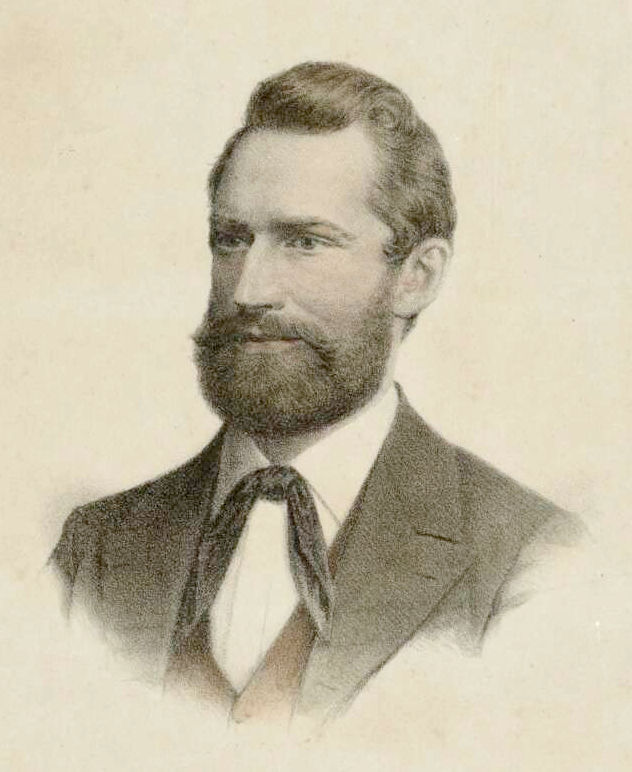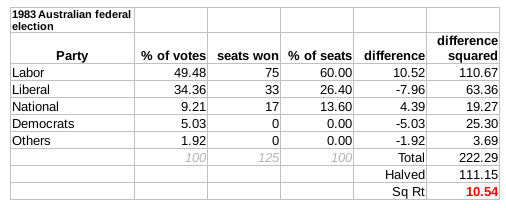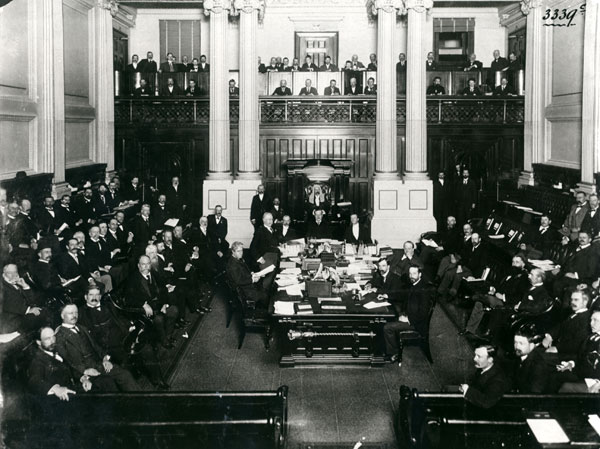|
David Thomson (Australian National Party Politician)
Brigadier David Scott Thomson MC (21 November 1924 – 13 October 2013) was an Australian soldier and politician. Early life and military career He was born in Sale, Victoria in 1924. He enlisted in the Australian Army in 1942, and graduated from the Royal Military College, Duntroon, being commissioned as an officer in 1943. He saw active service in World War II in the South-West Pacific, took part in the landing at Balikpapan, New Guinea, and served in Japan 1946–48. He was on active service again in Korea in 1951, where he was awarded the Military Cross. He served in Malaysia and Sarawak during the Malayan Emergency 1965–66. From 1967 to 1970 he was Director of Infantry and Regimental Colonel of the Royal Australian Regiment. Politics From 1972 to 1975 he operated a tourism business. He was the National Country Party (later the National Party) member for the House of Representatives seat of Leichhardt, Queensland, from the 1975 election until his defeat by John Gayle ... [...More Info...] [...Related Items...] OR: [Wikipedia] [Google] [Baidu] |
Division Of Leichhardt
The Division of Leichhardt is an Australian Electoral Division in Queensland. Geography Since 1984, federal electoral division boundaries in Australia have been determined at redistributions by a redistribution committee appointed by the Australian Electoral Commission. Redistributions occur for the boundaries of divisions in a particular state, and they occur every seven years, or sooner if a state's representation entitlement changes or when divisions of a state are malapportioned. History The division was first contested in 1949 after the expansion of seats in the Parliament of Australia. It is one of Australia's largest electorates, covering an area stretching from Cairns to Cape York and the Torres Strait, including the Torres Strait Islands. The division is named after Ludwig Leichhardt, an explorer and scientist. The area was first covered by the seat of Herbert from 1901 to 1934 and then by the seat of Kennedy until 1949. Most of the electorate is almost uni ... [...More Info...] [...Related Items...] OR: [Wikipedia] [Google] [Baidu] |
4th Battalion, Royal Australian Regiment
The 4th Battalion, Royal Australian Regiment (4 RAR) was an Australian Army infantry battalion and part of the Royal Australian Regiment. The battalion was formed on 1 February 1964 and was renamed the 2nd Commando Regiment on 19 June 2009. History Formation On 18 January 1952, a Royal Australian Regiment Depot was raised as a training unit for special establishment on the Order of Battle. The depot was later renamed 4 RAR on 10 March 1952. This renaming was necessary because government approval had been given to raise a battalion and not a depot. The primary function of 4 RAR at the time was to train and hold infantrymen for service in Korea. On 24 March 1960, the unit was incorporated into the School of Infantry as "Depot Company, Royal Australian Regiment". This resulted in the formation of the Infantry Centre. The political decision to raise the fourth battalion of the Royal Australian Regiment was made in 1963. Consequently, instructions for the raising of the battal ... [...More Info...] [...Related Items...] OR: [Wikipedia] [Google] [Baidu] |
1983 Australian Federal Election
The 1983 Australian federal election was held in Australia on 5 March 1983. All 125 seats in the House of Representatives and all 64 seats in the Senate were up for election, following a double dissolution. The incumbent Coalition government which had been in power since 1975, led by Malcolm Fraser ( Liberal Party) and Doug Anthony ( National Party), was defeated in a landslide by the opposition Labor Party led by Bob Hawke. This election marked the end of the seven year Liberal-National Coalition Fraser Government and the start of the 13 year Hawke-Keating Labor Government. The Coalition would spend its longest ever period in opposition and the Labor party would spend its longest ever period of government at a federal level. The Coalition would not return to government until the 1996 election. Background and issues At the time of the election, the economy suffered from high inflation and high unemployment, alongside increases in industrial disputation and drought across mu ... [...More Info...] [...Related Items...] OR: [Wikipedia] [Google] [Baidu] |
1975 Australian Federal Election
The 1975 Australian federal election was held in Australia on 13 December 1975. All 127 seats in the House of Representatives and all 64 seats in the Senate were up for election, due to a double dissolution. Malcolm Fraser had been commissioned as caretaker prime minister following the dismissal of Gough Whitlam's three-year-old Labor government by Governor-General Sir John Kerr, on 11 November 1975. The same day, Fraser advised an immediate double dissolution, in accordance with Kerr's stipulated conditions (see 1975 Australian constitutional crisis). The Coalition of Fraser's Liberal Party of Australia and Doug Anthony's National Country Party secured government in its own right, winning the largest majority government to date in Australian history. The Liberals actually won a majority in their own right, with 68 seats–the first time that the main non-Labor party had done so since adopting the Liberal banner in 1944. Although Fraser had no need for the support of the ... [...More Info...] [...Related Items...] OR: [Wikipedia] [Google] [Baidu] |
Queensland
) , nickname = Sunshine State , image_map = Queensland in Australia.svg , map_caption = Location of Queensland in Australia , subdivision_type = Country , subdivision_name = Australia , established_title = Before federation , established_date = Colony of Queensland , established_title2 = Separation from New South Wales , established_date2 = 6 June 1859 , established_title3 = Federation of Australia, Federation , established_date3 = 1 January 1901 , named_for = Queen Victoria , demonym = , capital = Brisbane , largest_city = capital , coordinates = , admin_center_type = Administration , admin_center = Local government areas of Queensland, 77 local government areas , leader_title1 = Monarchy of Australia, Monarch , leader_name1 = Charles III , leader_title2 = Governor of Queensland, Governor , leader_name2 = Jeannette Young , leader_title3 = Premier of Queensland, Premier , leader_name3 = Annastacia Palaszczuk (Australian Labor Party (Queensland Branch), AL ... [...More Info...] [...Related Items...] OR: [Wikipedia] [Google] [Baidu] |
Australian House Of Representatives
The House of Representatives is the lower house of the bicameralism, bicameral Parliament of Australia, the upper house being the Australian Senate, Senate. Its composition and powers are established in Chapter I of the Constitution of Australia. The term of members of the House of Representatives is a maximum of three years from the date of the first sitting of the House, but on only 1910 Australian federal election, one occasion since Federation has the maximum term been reached. The House is almost always dissolved earlier, usually alone but sometimes in a double dissolution of both Houses. Elections for members of the House of Representatives are often held in conjunction with those for the Senate. A member of the House may be referred to as a "Member of Parliament" ("MP" or "Member"), while a member of the Senate is usually referred to as a "Senator". The government of the day and by extension the prime Minister of Australia, Prime Minister must achieve and maintain the c ... [...More Info...] [...Related Items...] OR: [Wikipedia] [Google] [Baidu] |
New Guinea
New Guinea (; Hiri Motu: ''Niu Gini''; id, Papua, or , historically ) is the world's second-largest island with an area of . Located in Oceania in the southwestern Pacific Ocean, the island is separated from Australia by the wide Torres Strait, though both landmasses lie on the same continental shelf. Numerous smaller islands are located to the west and east. The eastern half of the island is the major land mass of the independent state of Papua New Guinea. The western half, known as Western New Guinea, forms a part of Indonesia and is organized as the provinces of Papua, Central Papua, Highland Papua, South Papua, Southwest Papua, and West Papua. The largest cities on the island are Jayapura (capital of Papua, Indonesia) and Port Moresby (capital of Papua New Guinea). Names The island has been known by various names: The name ''Papua'' was used to refer to parts of the island before contact with the West. Its etymology is unclear; one theory states that ... [...More Info...] [...Related Items...] OR: [Wikipedia] [Google] [Baidu] |
Balikpapan
Balikpapan is a seaport city in East Kalimantan, Indonesia. Located on the east coast of the island of Borneo, the city is the financial center of Kalimantan. Balikpapan is the city with the largest economy in Kalimantan with an estimated 2016 GDP at Rp 73.18 trillion. The city has the third busiest airport in Kalimantan after that in Banjarmasin and Pontianak, namely Sultan Aji Muhammad Sulaiman Sepinggan Airport. Port of Semayang was the second busiest seaport in East Kalimantan, after that in Samarinda. With a population of 688,318 according to the 2020 census, Balikpapan is the second most populous city in East Kalimantan, after Samarinda. Balikpapan has been consistently ranked as one of the most liveable cities in Indonesia. Balikpapan was originally a fishing village built by Buginese people in the 19th century. The first oil drilling began in Balikpapan on 10 February 1897, which was later set as the anniversary of the city. In 1899, the Dutch East Indies ... [...More Info...] [...Related Items...] OR: [Wikipedia] [Google] [Baidu] |
Royal Military College, Duntroon
lit: Learning promotes strength , established = , type = Military college , chancellor = , head_label = Commandant , head = Brigadier Ana Duncan , principal = , city = Campbell , state = Canberra, Australian Capital Territory , country = Australia , staff = , students = 425 (85 cadets in 5 companies) , campus = suburban , colours = Regimental Colours consist of the badge of the Corps of Staff Cadets on a blue ensign. Additionally, the Sovereign's Company carries the Queen's Colours, which originally comprised the Union Flag with a Crown and Royal Cipher as central motif, however, since 1970 the Australian National Flag has replaced the Union Flag on the Queen's Colours , affiliations = Duntroon Society , website = , mascot = 'Enobesra' , nickname = Cordie , coor = , footnotes = The Royal Military College, Duntroon, also known simply as Duntroon ... [...More Info...] [...Related Items...] OR: [Wikipedia] [Google] [Baidu] |
Mentioned In Dispatches
To be mentioned in dispatches (or despatches, MiD) describes a member of the armed forces whose name appears in an official report written by a superior officer and sent to the high command, in which their gallant or meritorious action in the face of the enemy is described. In some countries, a service member's name must be mentioned in dispatches as a condition for receiving certain decorations. United Kingdom, British Empire, and Commonwealth of Nations Servicemen and women of the British Empire or the Commonwealth who are mentioned in despatches (MiD) are not awarded a medal for their actions, but receive a certificate and wear an oak leaf device on the ribbon of the appropriate campaign medal. A smaller version of the oak leaf device is attached to the ribbon when worn alone. Prior to 2014, only one device could be worn on a ribbon, irrespective of the number of times the recipient was mentioned in despatches. Where no campaign medal is awarded, the oak leaf is worn direc ... [...More Info...] [...Related Items...] OR: [Wikipedia] [Google] [Baidu] |
Indonesia–Malaysia Confrontation
The Indonesia–Malaysia confrontation or Borneo confrontation (also known by its Indonesian language, Indonesian / Malay language, Malay name, ''Konfrontasi'') was an armed conflict from 1963 to 1966 that stemmed from Indonesia's opposition to the creation of Malaysia, the Federation of Malaysia. After Indonesian president Sukarno was deposed in 1966, the dispute ended peacefully and the nation of Malaysia was formed. The creation of Malaysia was a merger of the Federation of Malaya (now Peninsular Malaysia), Singapore and the Crown colony, British crown colonies of Crown Colony of North Borneo, North Borneo and Crown Colony of Sarawak, Sarawak (collectively known as British Borneo, now East Malaysia) in September 1963. Vital precursors to the conflict included Indonesia's West New Guinea dispute, policy of confrontation against Dutch New Guinea from March–August 1962 and the Indonesia-backed Brunei revolt in December 1962. Malaysia had direct military support from Great Bri ... [...More Info...] [...Related Items...] OR: [Wikipedia] [Google] [Baidu] |
Operation Blaze
Operation Blaze (2 July 1952) was a United Nations Command (UN) operation near Kangao-ri during the Korean War to capture a prisoner.O'Neill 1985, p. 243. The raid involved a company-sized attack from the newly arrived 1st Battalion, Royal Australian Regiment (1 RAR) on Chinese People's Volunteer Army (PVA) positions on Hill 227. Although the Australians were able to take some of the PVA positions on the hill, they did not achieve all of their objectives and were eventually forced to withdraw after running out of ammunition. Background Australia had committed a second battalion to the fighting in Korea in 1952, with the 1st Battalion, Royal Australian Regiment (1 RAR) joining 3 RAR in the 28th British Commonwealth Brigade of the 1st Commonwealth Division in early June. Soon after the battalion was detached to the 29th British Infantry Brigade to relieve the 1st Battalion, the Leicestershire Regiment, on the Jamestown Line. Battle A Company 1 RAR, under the command of Major Da ... [...More Info...] [...Related Items...] OR: [Wikipedia] [Google] [Baidu] |






_Oak_Leaf_Cluster.jpg)
